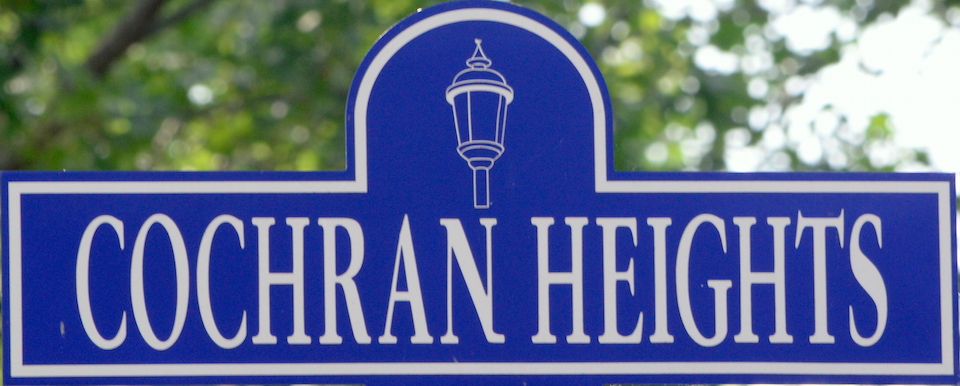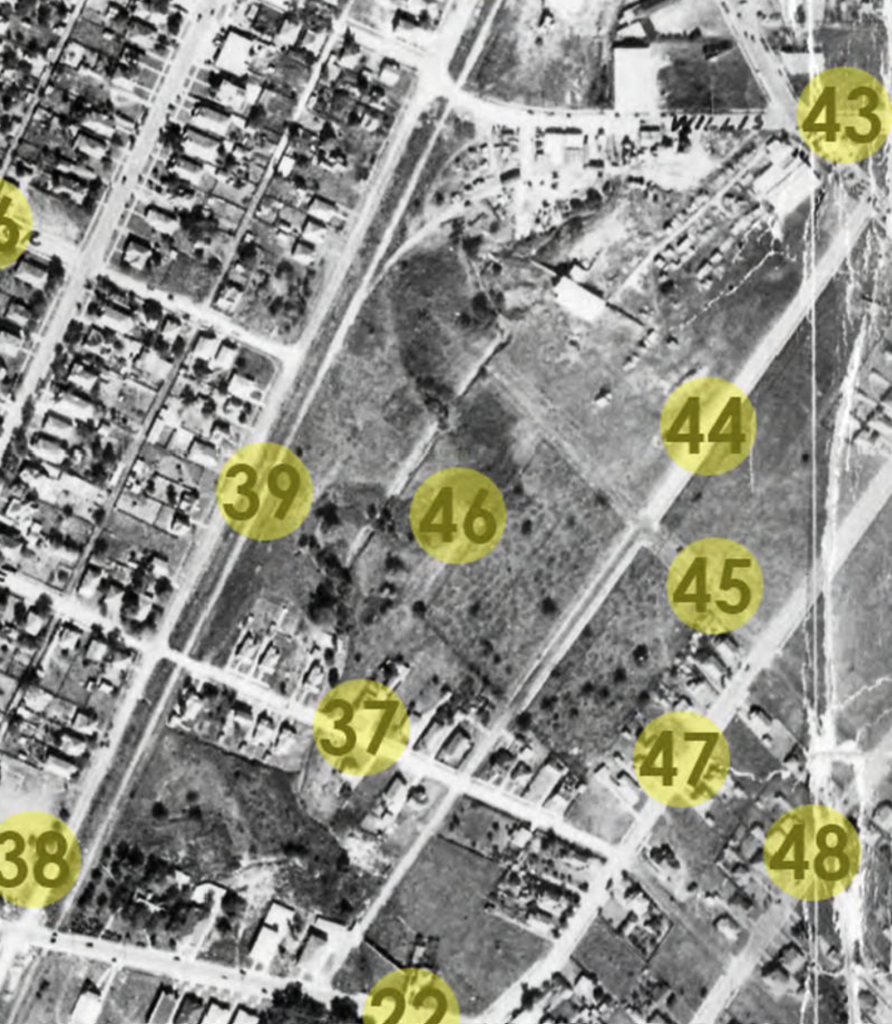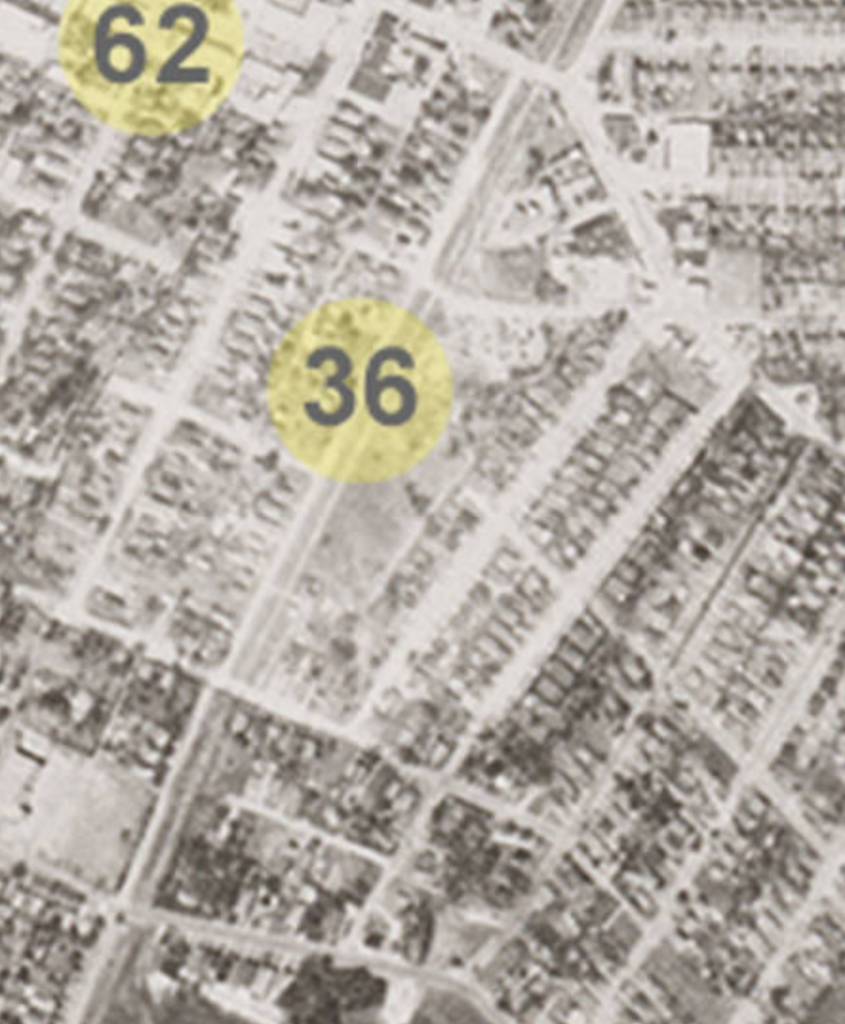Cochran Heights History
Neighborhood history buffs and writers have started putting together a brief history and significance of the street names found in Cochran Heights. These stories are listed below, and stay tuned as more are posted periodically! If anyone has specific historical information about the neighborhood or pictures that could be posted on the website, please let us know via email at cochranheights.na@gmail.com
The Cochran Heights neighborhood is named after Robert E. Cochran, a defender of the Alamo.
One of the earliest photographs of the Cochran Heights neighborhood can be found in a 1930 aerial survey, archived by SMU.
As you can see in the below sample photo from the archive, In 1930 Cochran Heights was in its infancy of development from dairy pastureland and orchards to a residential neighborhood. Just a few houses had been built on Lee Street and Alcott Street, and the future routes the rest of our streets were newly laid or even just dirt paths.
Within a few short years, architect Charles Dilbeck‘s distinctive cottages filled our neighborhood. The 1940 US Census records documenting the names, ages, educations, careers and incomes of all the residents of Cochran Heights were made public recently, providing a fascinating insight into the people that first lived in our homes.
A 1945 image from SMU’s archives of a USDA aerial survey shows our neighborhood fully built out.
Cochran Heights Preservation
Cochran Heights is one of Dallas’ historical neighborhoods, where a portion of the neighborhood falls under the Dallas Neighborhood Stabilization Overlay regulations. The stabilization overlays can regulate front yard setbacks, side yard setbacks, garage location, placement, and connection, and height. To read more about Stabilization Overlay in Dallas, click here.
The Cochran Heights District Ordinance #8, can be viewed here
Cochran Heights Streets
Many of the streets of Cochran Heights are named after significant historical figures in American and Texas History. Do you know more about the origins of our Cochran Heights street names? We would love to learn from your research!
Pershing Street
John Joseph ‘Blackjack’ Pershing. D.O.B. September 13th 1860. Laclede. Missouri. Died July 15th 1948. Washington DC. Pershing was the only person while still alive to achieve the highest rank in the US army-General Of The Armies. This rank was created especially for Pershing by Congress in 1919 in recognition of his long and distinguished military career. George Washington was promoted posthumously to this rank in 1976 by President Gerald Ford.
Pershing reported for active duty in September 1886.He took part in several Indian campaigns and was cited for bravery against the Apache. He also participated in the Massacre at Wounded Knee.
In 1895, Pershing took command of a troop of African American soldiers and, against popular opinion, became an active advocate for the recognition of the contribution of African American soldiers to the US army, thus earning him the nickname of “Blackjack.”
In 1905, Pershing married the daughter of a famous and powerful US senator, Francis Warren, a union that greatly assisted his military career. He was assigned to Fort Bliss, Texas in 1914. He decided to move his family there from San Fransisco. Just before the move, Pershing received a telegram from San Francisco telling him that his wife and three daughters died tragically in a fire at the Army Headquarters. His only son, Warren, survived. After the funerals, Pershing returned to Fort Bliss with his son, where he remained until the outbreak of the First World War.
Pershing was promoted to General in 1918. Famous military figures such as Douglas Mac Arthur, General Patton and General Eisenhower served under him.
Moves were made to nominate Pershing for the presidency in 1920, but Pershing refused to actively participate or campaign. Harding of Ohio won the presidency.
In 1924, at the age of 64, Pershing retired from active service. In 1932, he wrote his memoirs ‘My Experiences In The World War’ won the Pulitzer Prize for history. He died in 1948 in Washington and is buried in Arlington cemetery.
Milam Street
Named after Benjamin Milam, a leading figure in the Texas Revolution.
Alcott Street
Perhaps named after Louisa May Alcott, author of Little Women?


